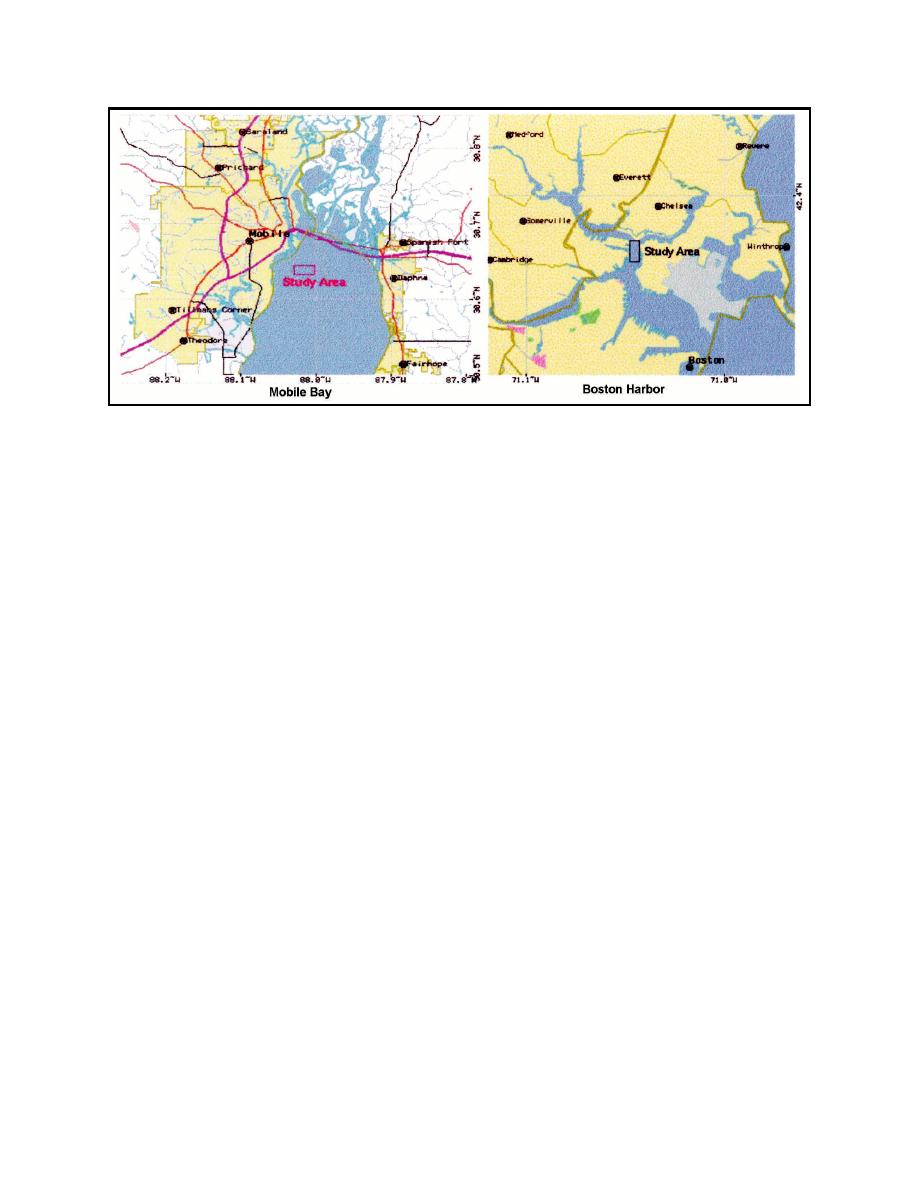 |
||
|
|
||
|
Page Title:
Figure 1. Locations of study areas |
||
| |||||||||||||||
|
|
 ERDC TN-DOER-E7
April 2000
Figure 1. Locations of study areas
occur regardless of the amount of suspended sediment present; consequently their effects on the
measurements are removed in the first processing step (Tubman 1995).
One of the most important aspects of applying acoustic technology to monitoring suspended-
sediment plumes from dredging operations is to define the ambient acoustic background. It is
necessary to determine what conditions exist at the measurement location just before sediment is
put into suspension by the operation, and what naturally occurring variations can be expected over
the length of time the operation is monitored. Ideally, this is accomplished by making acoustic
measurements just before dredging starts, and by calculating statistics from those measurements.
In the monitoring reported herein, the naturally occurring variations in ambient acoustic backscatter
were determined from measurements made by the BBADCP fifth beam along transects across the
study area during times when there was no dredging. In each of the fifth-beam 25-cm bins, the
standard deviation of the acoustic backscatter was calculated for all measurements made along these
transects. Since the fifth beam points straight down, these values for each bin represent the standard
deviation of acoustic backscatter as a function of depth. Just prior to the start of the dredging
operations, a transect was made in the area where the plume from the dredging operation was
expected to be located. Acoustic backscatter values from this transect (referred to as the background
transect) were subtracted from the values obtained during monitoring of the plume, and the results
were divided by the standard deviations of the background variations. The result is numbers that
represent the observed acoustic backscatter above background (ABAB). The precise manner in
which this was done was somewhat different for Boston Harbor than it was for Mobile Bay. In
Mobile Bay, the hopper dredge conducted its dredging operation while traversing a confined
channel, producing a plume as it proceeded, whereas in Boston Harbor, the clamshell dredge stayed
in approximately the same location, in an open area of the harbor, and produced a plume that
extended downstream from the dredge. For the Mobile Bay study, the background transect was
made across the channel at the midpoint in the length of channel dredged. In Boston Harbor the
background transect was run from the dredge, parallel with the current, to a point approximately
600 m downstream from the dredge.
3
|
|
Privacy Statement - Press Release - Copyright Information. - Contact Us - Support Integrated Publishing |